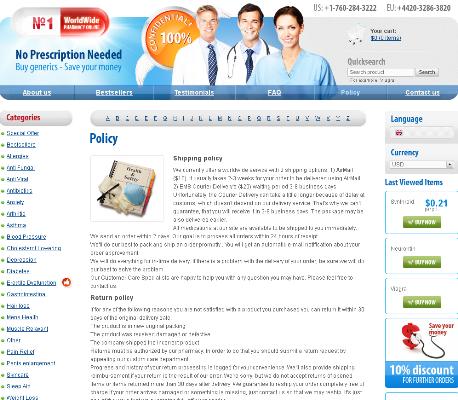Zithromax Vs Other Antibiotics: Pros and Cons
Zithromax Mechanism: Fast Action, Convenient Dosing
A quick clinical vignette shows how azithromycin can blunt symptoms within days, offering early patient reassurance while bacterial killing continues. Clinically this feels meaningful.
| Feature | Benefit |
|---|---|
| Once daily dosing short course | Convenience and adherence |
| Onset | Rapid symptom relief |
Its long tissue half-life allows short courses, which aids adherence and reduces exposure compared to longer agents. This pharmacokinetic profile speeds bacterial clearance in many respiratory and soft tissue infections.
Occassionally patients experience GI upset or QT changes, so clinicians weigh convenience against safety and tailor therapy to infection severity in practice.
Comparing Zithromax Effectiveness Across Common Bacterial Infections

In a clinic anecdote, a patient relieved quickly after a three-day course, I describe how zithromax can outperform others for some respiratory bugs while falling short for stubborn gram-negatives. Its tissue penetration and long half-life create a narrative of fast relief and simpler dosing, but clinicians balance that against narrower spectra and variability across infections. Patient comorbidities and drug interactions also shape outcomes.
Wich infections respond best? Commonly otitis, some community-acquired pneumonia and certain skin infections show good outcomes, yet urinary tract and some hospital-acquired pathogens often resist macrolides. Evidence urges targeted therapy: culture data, local resistance rates, and patient allergies should guide the choice to maximise benefit and minimise resistance and clinical severity factors.
Side Effects and Safety: Risks Versus Rewards
A patient weighs rapid relief against potential harms when considering zithromax; clinicians promise convenience and fast action, yet caution about allergic reactions, drug interactions, and gut flora disruption and recovery.
Most side effects are mild — nausea, diarrhea, headache — but rare cardiac arrhythmias and severe liver injury demand attention; clinicians advise baseline history, drug review, and monitoring for safety.
Balancing benefits requires shared decision-making: for many, symptom relief and short courses outweigh risks, but Occassionally alternatives are safer for pregnant patients, those with prolonged QT, or hepatic disease consideration.
Antibiotic Resistance Patterns: Zithromax Versus Others

Clinicians watch resistance trends closely, because what works today may fail tommorow. Patterns evolve with prescribing habits, travel, and community transmission.
Macrolides like zithromax select for specific mutations; Streptococcus and Mycoplasma species have shown rising macrolide resistance in many regions. Occassionally, resistance coexists with reduced susceptibility to other drug classes.
By contrast, narrow-spectrum beta-lactams often retain activity for common respiratory pathogens, but local antibiograms determine choices. Rapid diagnostics and stewardship programs help minimise inappropriate broad-spectrum use.
Clinicians should weigh convenience, resistance risk, and patient factors: culture-guided therapy, shorter courses when possible, and surveillance are key to slowing resistance and preserving options. Education of providers and patients about appropriate use remains an indispensable long-term strategy overall.
Cost, Accessibility, and Patient Convenience Considerations
A busy clinic scene often frames the decision: a patient wants fast relief and a simple regimen. Zithromax’s once-daily or single-dose options can feel liberating, reducing missed doses and improving adherence, especially for busy parents or travelers. Yet affordability and local formularies shape choices; a brand-name course may be cheaper in one region and pricier in another, so clinicians balance efficacy with what patients can realistically obtain.
Practicalities matter: generic zithromax is widely available and often lowers out-of-pocket spend, while mail-order pharmacies and 24-hour clinics Acommodate urgent needs. Insurance formularies, shortages, and local resistance patterns can force alternate choices, and clinicians must communicate trade-offs so treatment remains effective and affordable. Occassionally a short course is sufficient, but clear, timely follow-up plans and patient education about adherence, side effects, and when to return are indispensable parts of a successful care plan.
| Factor | Note |
|---|---|
| Price | Generics reduce cost |
| Access | Pharmacy and insurance dependent |
| Convenience | Single-dose or once-daily options improve adherence |
When to Choose Alternatives: Clinical Decision Factors
Clinicians weigh patient history, allergy status, and infection site when considering alternatives. A vivid case can shift choice: severe pneumonia or sepsis demands broader IV coverage and rapid escalation.
Microbiology guides therapy—culture results, local resistance, and severity matter. If macrolide resistance is likely, clinicians choose beta-lactams or fluoroquinolones, with stewardship principles to avoid neccessary broad-spectrum exposure.
Patient factors—age, pregnancy, comorbidities, drug interactions, and adherence ability—shape choice. Oral versus IV route, dosing convenience, and monitoring needs can preclude certain alternatives.
Shared decision-making matters; explain risks, benefits, and follow-up. When rapid response is uncertain, broaden then de-escalate based on cultures, biomarkers, imaging findings, timing of symptom onset, and the clinical course plus context. CDC FDA
<

